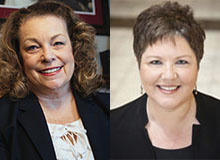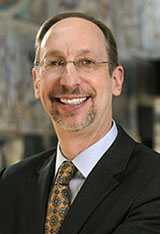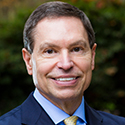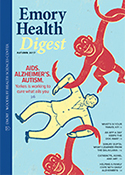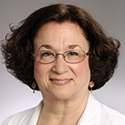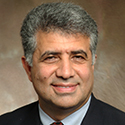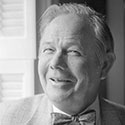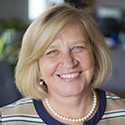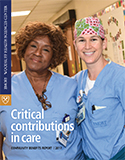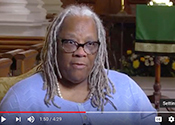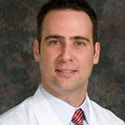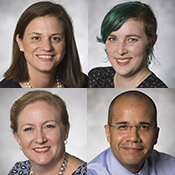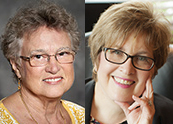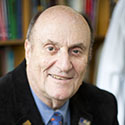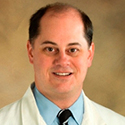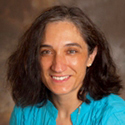

X-Y chromosome variations clinic |

Lessons from former presidents |

Heart screening honors a colleague |
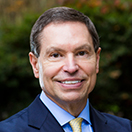 In brief |
|||||
| November 15, 2017 | |||||||||||||||
Emory and Grady to study Atlanta car crashes and injuries
Emory's Injury Prevention Research Center, along with Grady Memorial Hospital and collaborators at the University of Michigan, have been awarded almost $4 million for five years to study motor vehicle crashes in metro Atlanta that result in injuries treated at Grady. This project is funded by the National Highway Traffic Safety Administration and will create a Crash Injury Research and Engineering Network (CIREN) center here. CIREN centers collect data on the performance of vehicles in crashes and resulting injuries.
"Data from CIREN centers help drive rulemaking to make vehicles safer for passengers," says Jonathan Rupp (emergency medicine), principal investigator of the Emory/Grady CIREN center. David Wright (also emergency medicine) is co-principal investigator. "Motor vehicle accidents are the No. 1 trauma we see at Grady, resulting in thousands of crash victims each year," says Peter Rhee, chief of acute care surgery at Grady. Mark Shapiro, Grady's trauma medical director and chief of trauma, will also work in the CIREN study. Participants will be enrolled in the study when brought by ambulance or helicopter to Grady's Marcus Trauma Center following the crash. The Emory/Grady center is one of seven designated CIREN centers in the U.S. The Emory/Grady collaboration is one of two programs in the country that has been awarded both a medical and an engineering center designation. Sub-contractors from the University of Michigan will assist with engineering data analysis. Each designation provides different functions and responsibilities: - CIREN medical centers focus on data collection and enrolling patients into the study. This arm sends investigators into the field to measure the damage to the interior and exterior of the vehicle, download the event data recorder, and document the scene of the crash. In parallel, the medical center team records detailed information on the occupant injuries sustained during the crash that will eventually be matched to specific vehicle damage. - CIREN engineering centers focus on analysis of data collected by the medical centers with the goal of identifying how injuries occurred and the parts of the vehicle involved in causing these injuries. In this study, researchers expect to investigate 60 to 65 automobile crashes per year in greater metro Atlanta that result in injury. At the completion of the study, the investigators hope to have data on more than 300 patients injured in crashes. CIREN’s focus is on injury causation in newer vehicles; therefore, the study will enroll cars, vans, and light trucks that are six or fewer years older than the calendar year at the time of the enrollment. Some older car models will be considered if no major chassis or safety technology has changed within a certain period of time. The CIREN team will respond to car accidents in a specially marked CIREN crash investigation vehicle. After the first year of study, the team plans to begin researching crashes that involve pedestrians and motorcycles. Read more. New clinic for X and Y chromosome variations
One day a month, the recently opened "eXtraordinarY" clinic sees two to three young patients in Emory Clinic B. While its patient base is small, its reputation is growing as a resource for families affected by sex chromosome variations.
Established by pediatric nurse practitioner Sharron Close and developmental pediatrician Amy Talboy in 2016, the clinic is the first in the Southeast and one of a few nationwide that provide information, treatment, and access to research for these conditions. X and Y variations are not inherited and occur when girls (XX) and boys (XY) are randomly born with more or less than the expected number of sex chromosomes. Some people with variations such as trisomy X (which occurs in one out of 1,000 female births) and Klinefelter syndrome (which occurs in one out of 500 males births) live free of or are mildly affected by symptoms, while others face lifelong medical, developmental, and behavioral challenges. Girls with trisomy X, for example, may be unusually tall and have weak muscle tone and widely spaced eyes. Boys with Klinefelter syndrome may have tall stature, weak muscle tone, testosterone deficiency, and unhealthy metabolic profiles that predispose them to conditions such as central obesity, diabetes, hyperlipidemia, and cardiovascular disease. Both groups may experience issues with reproductive health and learning and social disabilities that impact psychosocial health and quality of life. While X and Y variations are not rare, they are rarely diagnosed, leaving children, adults, and families to struggle on their own without knowing why. "Families have been falling through the cracks for decades," says Close, a faculty member in the nursing school. "Our clinic meets a tremendous need." Close and Talboy currently see patients who have been diagnosed via chromosomal analysis. The clinic evaluates their needs and connects children and parents with early intervention programs, speech and language therapies, and occupational and physical therapies as needed. As children grow older, clinicians can address reproductive health problems that may arise during puberty. They can also counsel expectant parents about possible risk of X and Y variations detected through prenatal screening. A genetic counselor, nurse navigator, neuropsychologist, pediatric endocrinologist, and adult urologist staff the clinic, in addition to Close and Talboy. The clinic now has a wait list, and its co-directors are debating whether to add a second clinic day. "We are growing a step at a time," says Talboy, a faculty member in human genetics. "We want to be available to anyone who would like to see us. We will follow every child over time to make sure their needs are addressed, their therapy is adequate, and that they are progressing as hoped. We can also educate families about research opportunities available to them." Until recently, most X and Y research was descriptive in nature and offered few interventions to help patients and families. To close the gap, Close organized conferences in 2015 and 2016 to engage patients, families, clinicians, and scientists in developing ways to help children and parents manage X and Y symptoms and cope with the issues they face in their lives. The No. 1 goal of patients and families in attendance, she found, was to raise awareness and promote education about sex chromosome variations. For the past two years, Georgia Governor Nathan Deal has signed a proclamation declaring May as X & Y Chromosome Variation Awareness Month, marking a milestone in a grassroots campaign led by Close, Talboy, and Dorothy Boothe, whose son has XXY (Klinefelter) syndrome. Boothe is a member and parent leader of the Southeastern Regional X and Y Support Group, which draws patients and families from Georgia, North Carolina, South Carolina, Alabama, Tennessee, and Florida. The group meets bimonthly, often at the School of Nursing. "The first time we met, we had five or six times more people that we expected," says Talboy, who has addressed the Georgia State Senate about X and Y variations. Close is also a collaborator on a documentary by filmmaker Dianne Steinkraus, whose younger sister Carole has trisomy X. For years, Dianne consulted with doctors and behavioral experts to learn the cause of her sister's mental health issues. When Carole was 53, genetic testing confirmed she had trisomy X. Finally, the sisters had an explanation for Carole's lifelong struggles with anxiety, insecurity, and difficulty connecting with family and friends. It also explained why she was 6 feet tall by age 12. Carole, now 60 and in assisted living in Minnesota, is the inspiration behind Dianne's film. When completed, it will feature experts and projects from around the country, including a regional network of eXtraordinarY clinics like the one at Emory. "There probably are many other women like Carole who still haven't been diagnosed," says Close.—Pam Auchmutey Lessons from former presidents
During the first six months of this year, Emory physician Tracey Henry (general medicine) dined with President George W. Bush, chatted with President Bill Clinton, and toured the LBJ Ranch with the former president's daughter, Lucy Baines Johnson. Henry was taking part in the Presidential Leadership Scholars program, a partnership of the presidential centers of Presidents Johnson, Clinton, and both Bushes.The program is intended to give professionals perspective on their own leadership styles, provide insights from presidents and their administrations and staffs, and spark future unexpected partnerships, all while supporting the centers' work to address society's greatest challenges. Henry was in the program's third cohort, and she is the first from Emory to be admitted. In addition to attending modules at the four presidential centers, each scholar must make progress on a personal leadership project. Henry's project involves improving mental health access by laying the groundwork to integrating mental health services into the primary care center at Grady Hospital. "In primary care, nearly half of all patients seen with a physical complaint meet the criteria for a mental health disorder, but we were only screening about 20%," says Henry. "We are now screening in some of the clinics close to 70% of our patients, and we now have a mental health professional in the clinic so we can refer patients immediately." Henry took away different messages from each program module. At the first stop in College Station, Texas, she learned about the importance of cultivating relationships and strategic partnerships. "President George H.W. Bush always wrote people back and went out of his way to connect with people," says Henry. "Despite being under the weather, he showed up along with his wife to welcome our class. That left an impression." At her second stop at the William J. Clinton Presidential Center in Little Rock, Arkansas, Henry learned the importance of vision and communication and the power of storytelling. "President Clinton told us that everyone has a story to tell, but unfortunately not everyone knows how to tell it," she says. "He is a master storyteller who can enthrall his audience." In Dallas, the message Henry took away was the art of decision making and how to make value-based decisions. "Even though he [President George W. Bush] wanted to be an education president, with his No Child Left Behind initiative, he had to shift his focus," she says. "September 11 happened, and Katrina happened. He had to be flexible and address the issues at hand." And at the LBJ Presidential Center, Henry considered the importance of timing and using one's influence. "We were actually allowed to listen to recordings of President Johnson's phone conversations with Martin Luther King Jr. as they discussed civil rights legislation," says Henry. "Johnson leveraged the deaths of JFK and MLK to push his civil rights and voting rights agendas forward." Henry knows she and the other 59 Presidential Leadership Scholars may not be currently making decisions as weighty as those the program highlighted, but that is not the point. "I think my main takeaway from this program is leadership is not necessarily accomplishing a huge or rare monumental feat," she says. "It is what you do every day."—Martha McKenzie Call center honors a colleague with heart screening
Michelle Martin took her last call around 10:30 a.m. That's when Martin, a team lead in internal medicine specialties at the Emory Healthcare Call Center, put her headset down and headed outside for some fresh air for her 15-minute morning break. She suffered a heart attack and died before her break was over. Martin's co-workers were devastated by the loss. The call center staff had a memorial service and, in recognition of her love of training, named their training room in Decatur Plaza in her honor. Perhaps the most meaningful memorial, however, was instigated a few miles away on Clifton Road. Robert Taylor, director of cardiology, learned of Martin's death and called Gina Lundberg, the clinical director of Emory Women's Heart Center. He asked if Lundberg's team could screen call center employees for heart disease.
Lundberg's answer was yes. On two Fridays, a team of staff led by Linda Delaney (administrator of cardiology operations), Stacy Jaskwhich (nurse practitioner), and Pam Stanley (nursing director of interventional radiology/cardiac imaging) volunteered their time to screen 120 call center employees who agreed to participate. The screening was thorough, collecting information on blood pressure, body mass index, waist circumference, cholesterol, and personal and family medical history. A large number of those screened were found to be at high risk for heart disease. These employees were encouraged to talk with a Women's Heart Center nurse about treatments and lifestyle interventions. "About 90% of our employees are women, and most are working mothers, like Michelle, who was a single mother of two boys," says Alan Kramer, director of patient access at Emory. "They tend to take care of everybody but themselves. There was no better way for Michelle's peers to honor her than to take a minute to care for themselves and find out if they are at risk for the disease that took her life."—Martha McKenzie |
| From the Executive VP
First steps toward new strategic partnership
As announced yesterday, Emory Healthcare and DeKalb Medical have signed a Letter of Intent to develop a strategic partnership. This marks the beginning of the process to formulate a definitive agreement to bring our two systems together under the Emory Healthcare system. Read more about this agreement. Please direct questions and comments to
New Emory board chairman
Emory's Board of Trustees has elected business executive Robert C. Goddard III to serve as its new chair. Goddard has served as a trustee since 2008 and as vice chair of the board since 2016. He succeeds John F. Morgan, who is retiring as chair after serving in the role since 2013 and as an Emory trustee since 1996. Goddard is chairman and CEO of Goddard Investment Group, a privately held firm investing in commercial real estate. Read more. Covering the entire WHSC enterprise
Please check out the first issue of Emory Health Digest, a magazine that covers the entire Woodruff Health Sciences Center. Produced twice a year, this digest includes stories about work in all the WHSC's missions across the enterprise. National Magnet Award
Mary Still, clinical nurse specialist at Emory University Hospital, was recognized as a 2017 National Magnet Nurse of the Year by the American Nurses Credentialing Center. This is the second year in a row that such an award has been given to an Emory nurse. Last year, Sharon Vanairsdale received this award for her role as program director for Emory's Serious Communicable Diseases Unit. Medical director for surgical partnership
Omar Lattouf has been named medical director of the new cardiothoracic surgical partnership established between Navicent Health in Macon and Emory Healthcare. He will serve as VP for Cardiac Innovation & Outreach. Read more. New clinic named for Linton Bishop
Emory Clinic's newest location, which opened earlier this month in Buckhead, is named for the late Linton Bishop, an Emory medical alumnus (47M), longstanding volunteer faculty member in the medical school, and former Emory trustee. Bishop served as physician to the Genuine Parts Company's top executives, including its first CEO Carlyle Fraser, and second CEO, Wilton Looney. He worked with the latter to establish the Carlyle Fraser Heart Center at Emory Crawford Long Hospital (now EUH Midtown). Special journal issue on climate change
Nursing dean Linda McCauley co-edited a special issue of the Journal of Nursing Scholarship exploring climate change, global health, and the role of nursing in addressing environmental changes and protecting vulnerable people and populations. Read more. Charity care, other community benefits
In fiscal year 2017, Emory Healthcare provided $73.5 million in charity care and $125 million to support teaching and research in the WHSC. Emory medical faculty provided another $24.6 million in unreimbursed care at Grady Hospital. The WHSC had an economic impact on metro Atlanta of $8.2 billion. Check out these figures and details behind them in the WHSC's 2017 Community Benefits Report. Healing songs
Watch a video about the research of nursing faculty member Jill Hamilton, showing how religious music can help cancer patients heal. Need for new stroke treatment guidelines?
Standard guidelines for stroke treatment currently recommend clot removal only within six hours of stroke onset. But a milestone study with results published Nov. 13 in the New England Journal of Medicine shows that clot removal up to 24 hours after stroke led to significantly reduced disability for properly selected patients. Raul Nogueira (neurology) is co-principal investigator. Read more. Space station to host stem cells for heart research
Emory/Children's researchers Chunhui Xu, Kevin Maher, and Rajneesh Jha have been using space-simulation machines to enhance ability of stem cells to turn into cardiac muscle cells. Now they—or the cells they've cultured at least—will have the chance to experience a real outer space environment on the International Space Station, thanks to a new grant from the Center for the Advancement of Science in Space. Read more. Notable
Four staff members in health sciences were among 14 recipients of Emory's Award of Distinction: Jena Black (RSPH), Amy Dryman (animal resources), Kimberly Kerstann (Winship), and Marcus Urquiaga (nephrology). Read more.
Nursing faculty members and alumnae Linda Grabbe and Marilyn Margolis received awards at an Emory alumni event last month. Read more.
Michael Kutner (biostatistics, RSPH) was honored last month for his 40-year career at Emory at an alumni event that included presentation of the Kutner Distinguished Alumni awards. Read more.
Urologist Chad Ritenour, chief medical officer of Emory University Hospital, recently was elected chair of the Accreditation Council for Graduate Medical Education Review Committee, which is responsible for accrediting all urology residency programs in the country.
Read an eloquent case for the importance of university support for animal research in Inside Higher Ed by Yerkes researcher Mar Sanchez. Event Nov. 28: Healthcare Innovation Symposium XX1: Leadership in Population Health, 12-2, SOM 120. Register. |




